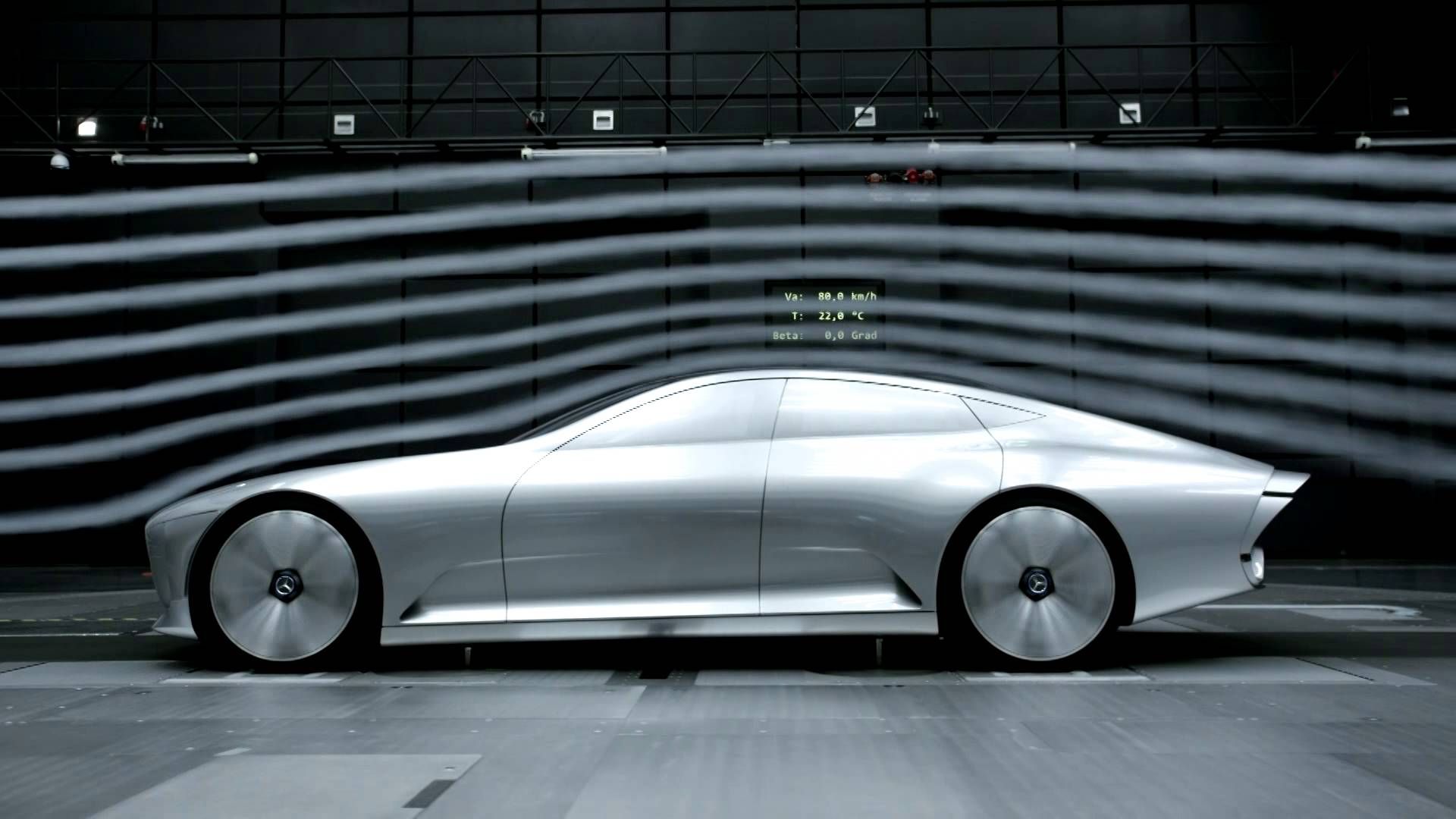
Written by Andrés
05 Jun 2017
This might be my very first post about engineering, which is a little bit weird considering that I am studying engineering (this is where the emoji with the hand on his chin wondering something goes). Anyway, let’s talk about something that I really like and hopefully someone will like it as well: cars, specifically racing cars!
Motorsports is where engineers test the limits of new technologies, where engineers break their head thinking on how they can defeat the other teams on the race track by building the best car. As you might know, I’ve been working on Chalmers Formula Student, where basically I’m part of a 32 team building a formula-like car.
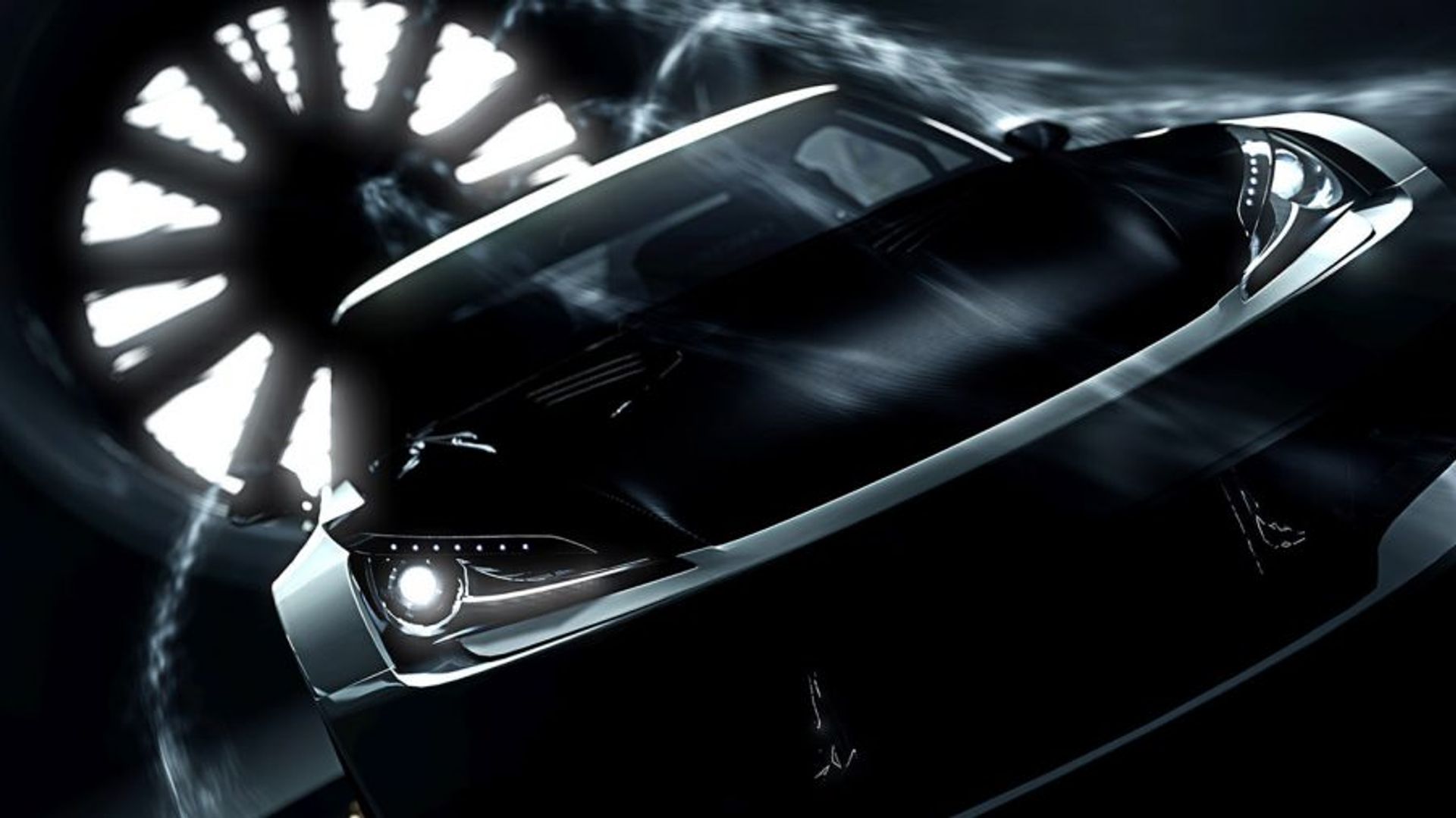
Aerodynamics
As part of the Aerodynamics subgroup within Chalmers Formula Student, my job is to increase the overall performance of the car by adding wings to the car. This might sound non-sense, “adding wings into a car?”, for now just trust me when I say that wings on race cars or sport cars are good.
It might be a little bit complex to explain but I will do my best, let’s start by defining what aerodynamics is:
Aerodynamics: noun, plural in form but singular or plural in construction: aero·dy·nam·ics \ ˌer-ō-dī-ˈna-miks
1. The branch of mechanics that deals with the motion of air and other gases and with the effects of such motion on bodies in the medium.
We all have extended our hand out of a car’s side window and felt the air pushing our hand, this is basically a straight forward way for understanding aerodynamics. If an object moves through a fluid, air in this case, then the object will experience forces acting on it. One of them it’s the resistance of motion, and this one is called aerodynamic drag. The second force might be not so obvious, mostly unnoticed by the everyday driver, this force is the one “pushing” the car more to the ground, known as aerodynamic downforce.
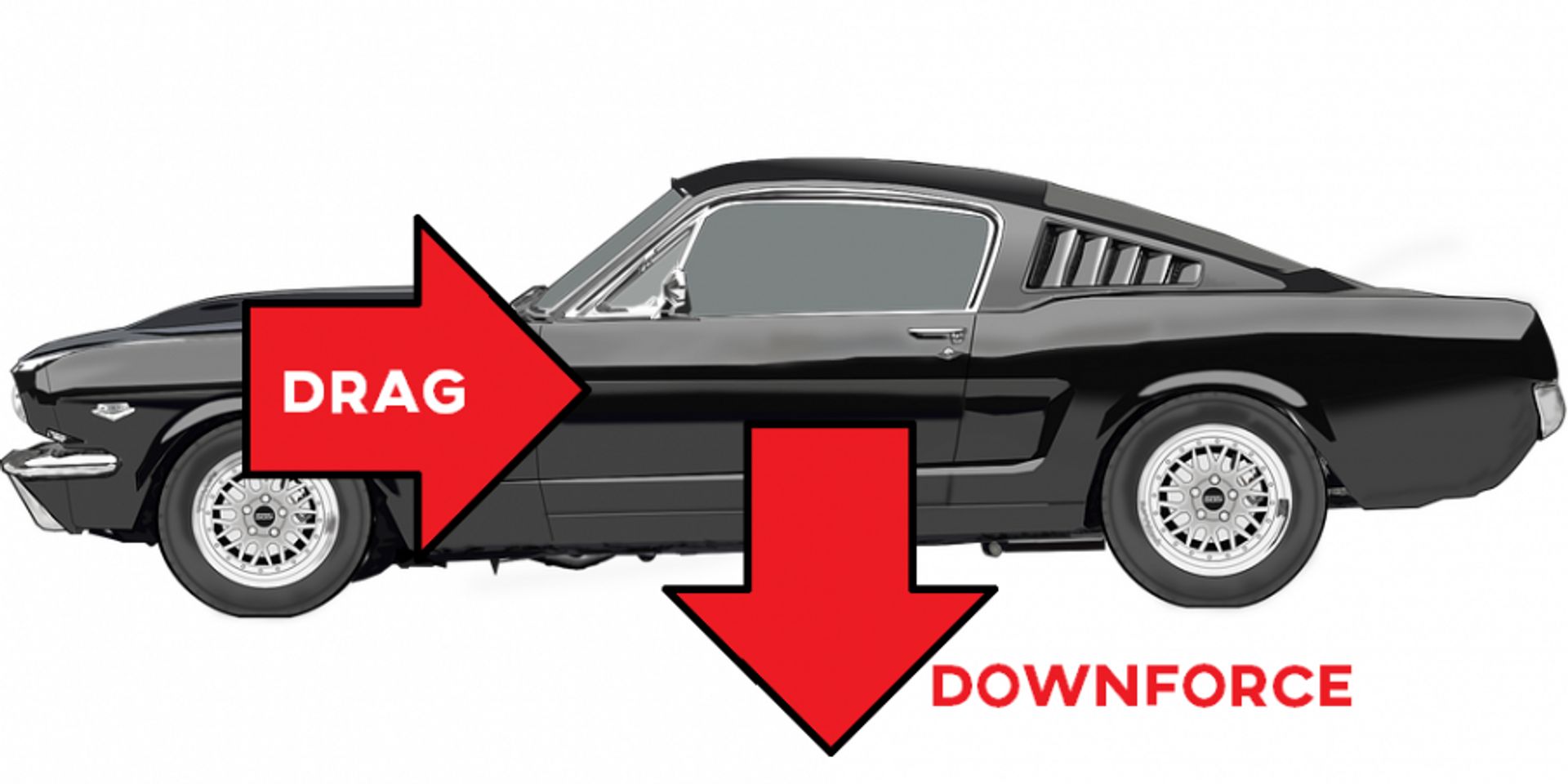
Now for racecars aerodynamic downforce is of a greater importance than drag, this does not mean that drag can be left aside, simply it comes secondary. So far, I have explained briefly what aerodynamics is and which forces are generated due to the airflow, and everyone has experienced firsthand the aerodynamic drag so it is easier to understand that one, but how does downforce is produced?
Downforce
To understand aerodynamic forces, specifically downforce, a typical cross section of a wing is of use. Now, let us assume that it moves from left to right. Because of the shape and angle of this airfoil section, the air will move faster on the lower surface than on the upper one. This speed difference creates a low pressure (suction) on the lower surface and a higher pressure on the upper one. The result of this pressure difference is the force that pushes the car more to the ground a.k.a aerodynamic downforce.
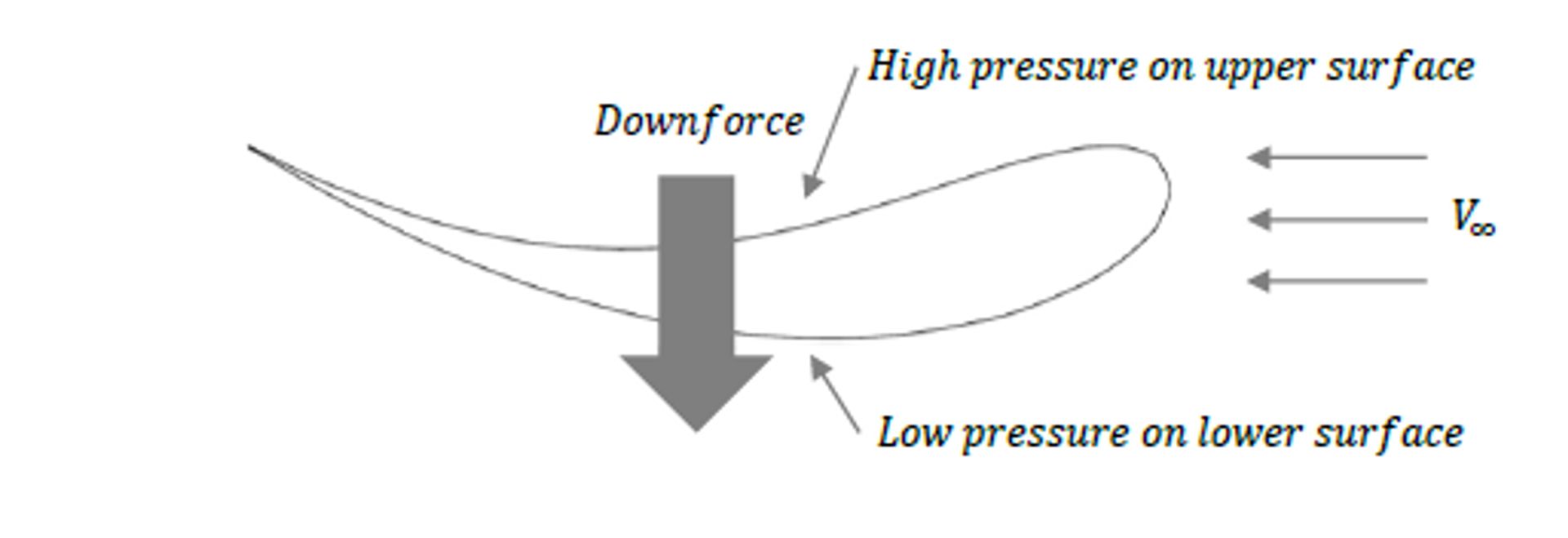
In a car, the forces to push it forward are created at the contact patch between the ground and the tire, these friction-like forces are strongly affected by the vertical force applied. Now, if we could increase the vertical tire force (and maximum friction) by pushing the tire more against the road, then the cornering force could increase dramatically, without the risk of sliding!
Long story short, if we push the tires against the ground we can take the corners at a higher speed without going off road, or without sliding, hence we can go faster around the track and reduce the lap times!
This is one of the main reasons why race cars look completely different to passenger cars!
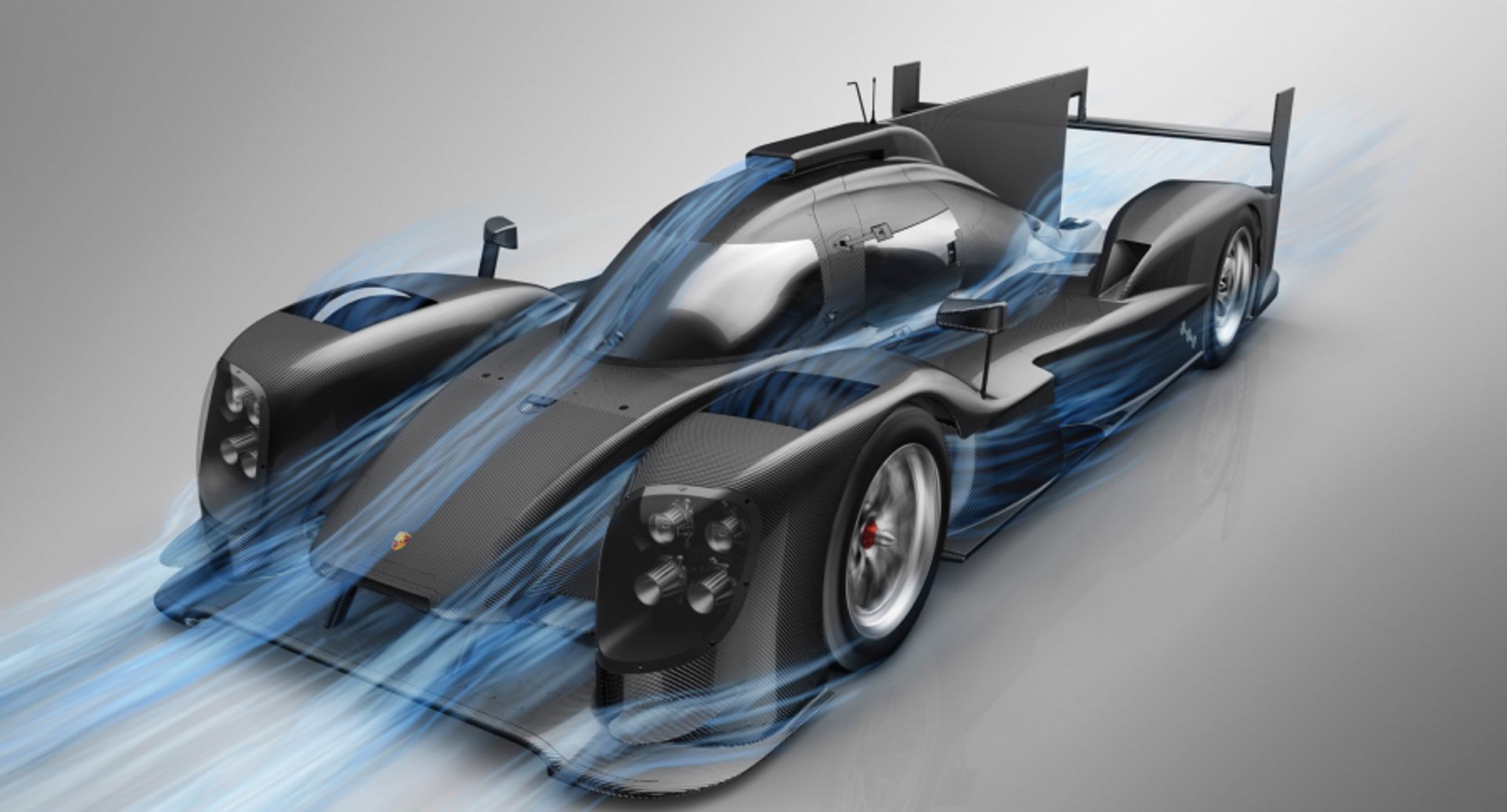
#AndresInGöteborg






